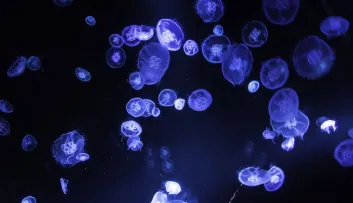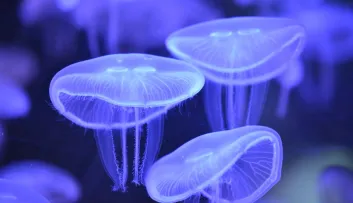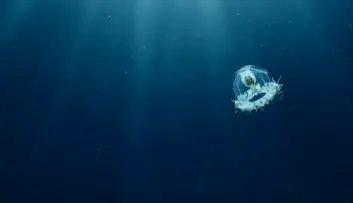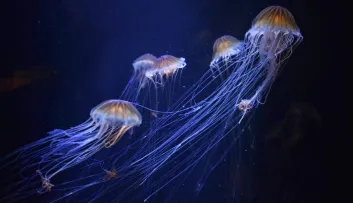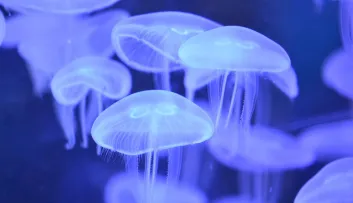Dossier méduses
Discover the history of the Blue Jellyfish at Nausicaá
New at Nausicaá! A new species of jellyfish makes its first appearance in the Mankind and Shores exhibition.
- 3mn read
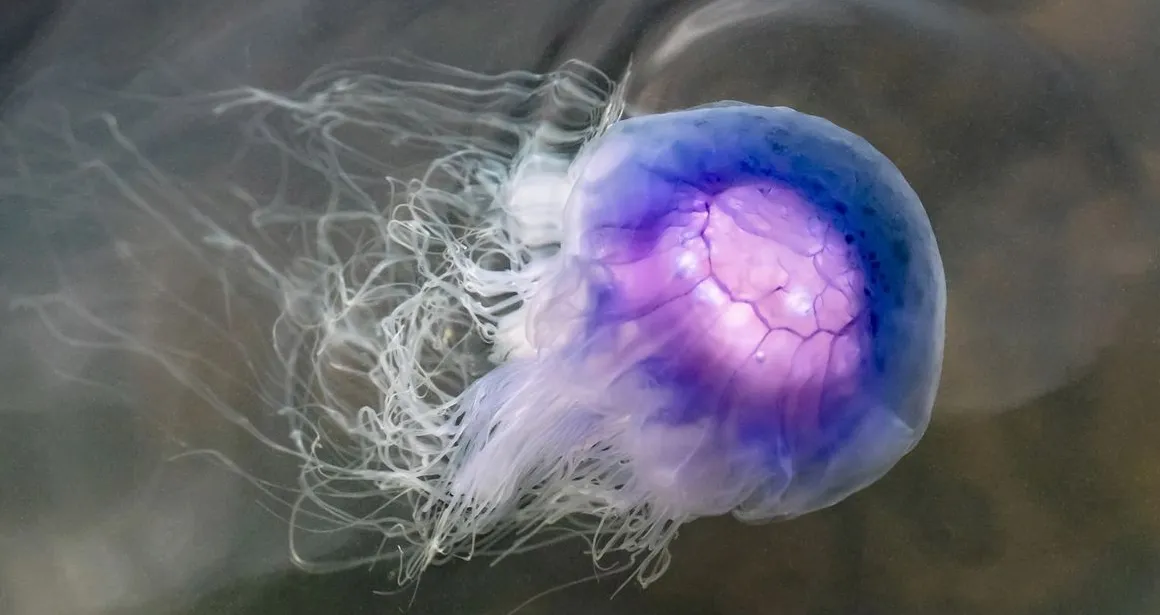
This newcomer, the blue jellyfish, Cyanea lamarckii, makes its first appearance at Nausicaá in a surprising way
Fishing for jellyfish
Indeed, in June 2023 Coralie and Constance, who are in charge of jellyfish at Nausicaá, went fishing for jellyfish in Boulogne’s port where they were proliferating. The catch was good and our two aquariologists came back with 60 living jellyfish, almost certainly blue jellyfish. At the time, it was difficult to tell whether these were young jellyfish or jellyfish that were at the end of their life cycle.
Some of these jellyfish were sexually mature and had bunches of eggs under their bellies. The mode of reproduction is different for other species of jellyfish, which release their gametes into the water where they are fertilised.
Constance and Coralie therefore rushed to recover this precious commodity, and placed the eggs in polyp boxes so they could hatch and allow the polyps to develop.
Birth of blue jellyfish, a first at Nausicaá!
In August the first polyp appeared and then in November the first ephyra - baby jellyfish resulting from strobilation.
And finally, it was in December that it was possible to determine the species precisely: the presence of filaments around the jellyfish’s bell confirmed that these were blue jellyfish. These pretty jellyfish - also called bluefire jellyfish - were placed in their exhibition aquarium a few weeks ago.
A wonderful reward for all the keepers’ efforts!
Since this miraculous catch in June 2023, Constance and Coralie have been able to take the eggs from some of the blue jellyfish born at Nausicaá, that have reached sexual maturity. Here we go for a new generation of bluefire jellyfish!
Jellyfish breeding, a Nausicaá speciality
Nausicaá’s aquariologists have developed expertise over the years allowing them to breed and raise many species of jellyfish in their aquariological reserves and thus reduce the numbers taken from their natural habitat.
The Jellyfish Reserve houses a number of aquariums that contain jellyfish in different stages of development. Constance and Coralie monitor these different stages with great care to ensure that the jellyfish can grow and develop all year long.
Now it’s your turn to discover them during your visit!
In the Footsteps of a handler
If you are intrigued by jellyfish reproduction and want to learn more about these fascinating animals, spend a half-day with a Nausicaá handler to unravel the mysteries of the jellyfish and understand better what aquariologists do.

